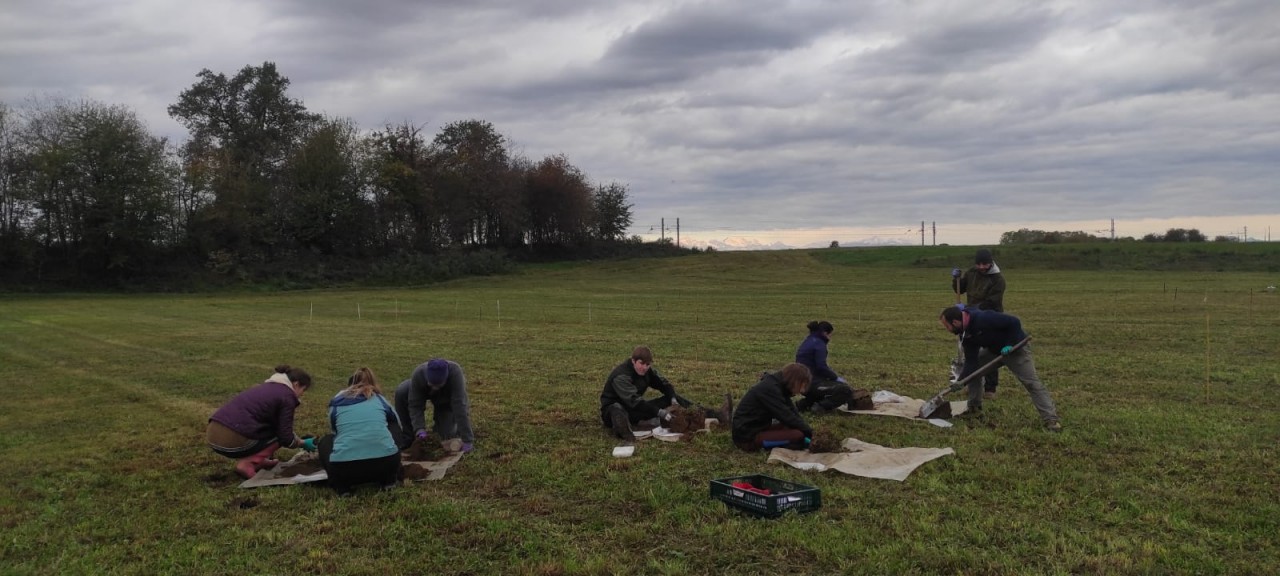The Big Field Experiment
In September 2021 we started the big field experiment in the Piedmont region, a highly infested zone. Giovanni Bosio from the plant health service of the Piedmont region found meadows which were not treated yet and with willing owners to let us do experiments with different biological control agents (BCA).
We treated the meadows with 2 different strains of fungus, 2 different strains of nematodes and of course a control treatment. This experiment was carried out by team Agroscope and team Crea.
In the fields we count the number of larvae and take soil samples back to the lab to verify if our biological control agent is still present. We did this before treatment (September 21), after treatment (November 21) after the winter (April 22) and then yearly in November.
Over all we have:
- 3 big fields
- 6 different treatments
- 10 repetitions
- 9 holes per plot
- 18-20 people
This equals in a total of 1'620 holes which we need to dig up and check thoroughly (or ~90 holes per person).
As the year is slowly coming to an end, we met once again on the field.
Team Agroscope had their lunch directly on the field, which also allowed time for siesta.
Work always needs to be fun. And we usually have a lot of that!
This undertaking is not only a combined experiment between two research groups, it has become a lot more. What started with a collaboration has turned into friendship.
And since most of us are entomologist, we are not only interested in the Popillia larvae.
By accepting you will be accessing a service provided by a third-party external to https://www.popillia.eu/








































